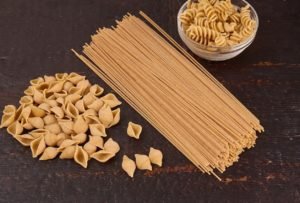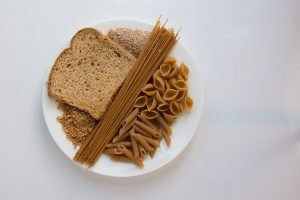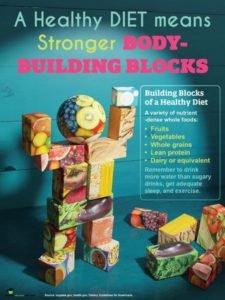Building Blocks of Health: Whole Grains
It's time for another installment of our brand-new series, The Building Blocks of Health.If you haven't seen our previous posts, don't miss...
- Building Blocks of Health: Intro
- Building Blocks of Health: Vegetables
- Building Blocks of Health: Fruit
Today we are all about grains! Different Types of Grains:You can divide grains into two categories: whole grains and refined grains.Refined grains have been more processed than whole grains, with various parts of the grain and its nutrients removed. Whole grains, on the other hand, have been less processed and have more of their nutrients intact.It may not surprise you that whole grains are much better for your health.
Different Types of Grains:You can divide grains into two categories: whole grains and refined grains.Refined grains have been more processed than whole grains, with various parts of the grain and its nutrients removed. Whole grains, on the other hand, have been less processed and have more of their nutrients intact.It may not surprise you that whole grains are much better for your health. Why Eat Whole Grains?Let's begin with MyPlate, which asserts "Grains provide many nutrients that are vital for the health and maintenance of our bodies."Which nutrients? Here's a list of the top 7:
Why Eat Whole Grains?Let's begin with MyPlate, which asserts "Grains provide many nutrients that are vital for the health and maintenance of our bodies."Which nutrients? Here's a list of the top 7:
- Fiber: This nutrient is great for you, and we've already discussed its benefits in previous installments.
- Iron "is used to carry oxygen in the blood" (source).
- Magnesium "is a mineral used in building bones and releasing energy from muscles" (source).
- Niacin, Riboflavin, and Thiamin all "play a key role in metabolism -- they help the body release energy from protein, fat, and carbohydrates. [They also...] are essential for a healthy nervous system" (source).
- Selenium "protects cells from oxidation. It is also important for a healthy immune system" (source).
Furthermore, according to the study, Health Benefits of Dietary Whole Grains: An Umbrella Review of Meta-analyses, "evidence for dietary whole grain intake to be beneficial in the prevention of type 2 diabetes, cardiovascular disease, and colorectal, pancreatic, and gastric cancers." How Many Whole Grains Should I Eat Each Day?MyPlate recommends making at least half of all the grain foods you eat each day whole grains.For most adults, that's 6 ounces of grains per day, with at least 3 ounces as whole grains. You can calculate your specific needs with this handy calculator.
How Many Whole Grains Should I Eat Each Day?MyPlate recommends making at least half of all the grain foods you eat each day whole grains.For most adults, that's 6 ounces of grains per day, with at least 3 ounces as whole grains. You can calculate your specific needs with this handy calculator. Five Favorite Whole Grain Recipes:There are lots of great whole grains out there, including oatmeal, popcorn, brown rice, quinoa, farro, whole wheat pasta, corn tortillas, and whole grain bread. Here are just a few of my top whole grain recipes...
Five Favorite Whole Grain Recipes:There are lots of great whole grains out there, including oatmeal, popcorn, brown rice, quinoa, farro, whole wheat pasta, corn tortillas, and whole grain bread. Here are just a few of my top whole grain recipes...
- Slow-Cooker Steel-Cut Oatmeal
- Whole Grain Pancakes
- Whole Wheat Pizza
- Mushroom Stroganoff with Whole Grain Pasta
- Brown Rice and Kale Pilaf
We're writing this series to build on the keys outlined in this poster! Once your audience understands the building blocks of a healthful eating pattern, they can make real improvements to their health. References:
References:
- https://www.myplate.gov/eat-healthy/grains
- https://www.ncbi.nlm.nih.gov/pmc/articles/PMC5310957/
- https://www.myplate.gov/myplate-plan/results/2000-calories-ages-14-plus
- https://www.myplate.gov/myplate-plan


